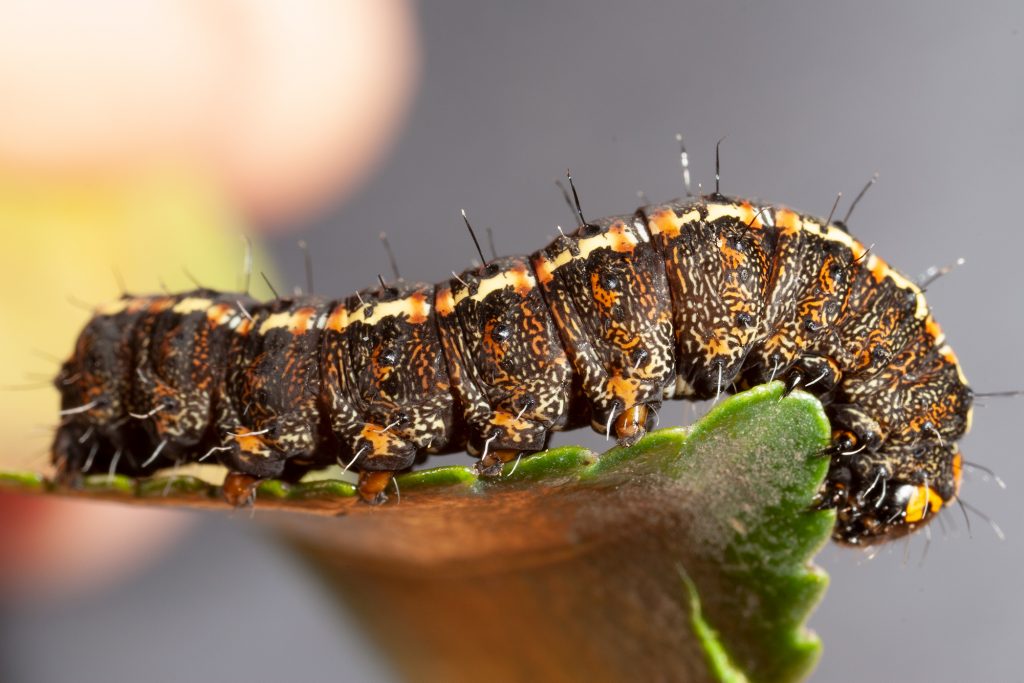Brown pasture looper has been attacking a variety of crops (and weeds) this winter.
High numbers of brown pasture looper (Ciampa arietaria) have been damaging established lucerne stands in the Elmore region of Victoria’s Northern Country. Between 3 – 10 loopers per plant have been observed, with extensive feeding damage reported.
This native species has also been reported chewing lentils in the Wimmera and attacking canola earlier in the season in the Victorian Mallee and the NSW Riverina.
Staying true to its reputation of enjoying broadleaf weeds, brown pasture loopers have been observed defoliating wild radish in a paddock of wheat in the NSW Central West Slopes & Plains.
Brown pasture looper identification
Brown pasture loopers are easy to identify once you know what to look out for.
The distinctive feature is the two, bright yellow wavy lines running down along the back.
Brown pasture loopers can be confused with pasture day moth (Apina calisto) and ‘herringbone caterpillars’ (Proteuxoa spp.).
To further confirm the identification of a suspected brown pasture looper, flip the grub onto its back or side and observe how many sets of abdominal prolegs it has. These are the leg-like appendages that caterpillars use to move.
While most caterpillars have four sets of these, brown pasture loopers only have one set.
They use their single pair of abdominal prolegs and one pair of anal prolegs to move using a series of back arches, which results in a characteristic looping motion.


Photo by Andrew Weeks, Cesar Australia 
Photo by Andrew Weeks, Cesar Australia
Management considerations
Once caterpillars reach 30-35 mm in length, their damage potential is limited; they will soon pupate.
Control of brown pasture loopers can be assisted by natural enemies including parasitic wasps, which attack the eggs. They are also prey to spined predatory shield bugs and glossy shield bugs as young larvae.
If chemical control is warranted, there are several insecticides registered against brown pasture loopers, however spot spaying or perimeter spraying is often all that is required.
For more information on brown pasture loopers including their occurrence, lifecycle, behaviour and management strategies, visit brown pasture looper within our PestNote series.
Acknowledgements
Field reports
Sandy Biddulph – Biddulph Rural Consulting (South West Slopes, NSW)
Luke Maher – AGRIvision Consultants (Mallee, VIC)
Jamie Pursehouse – Landmark (Central West Slopes & Plains, NSW)
Rick Rundell-Gordon – Grounded Agronomy (Mallee, VIC)
Greg Toomey – Landmark (Northern Country, VIC)
Cover image: Photo by Andrew Weeks, Cesar Australia





